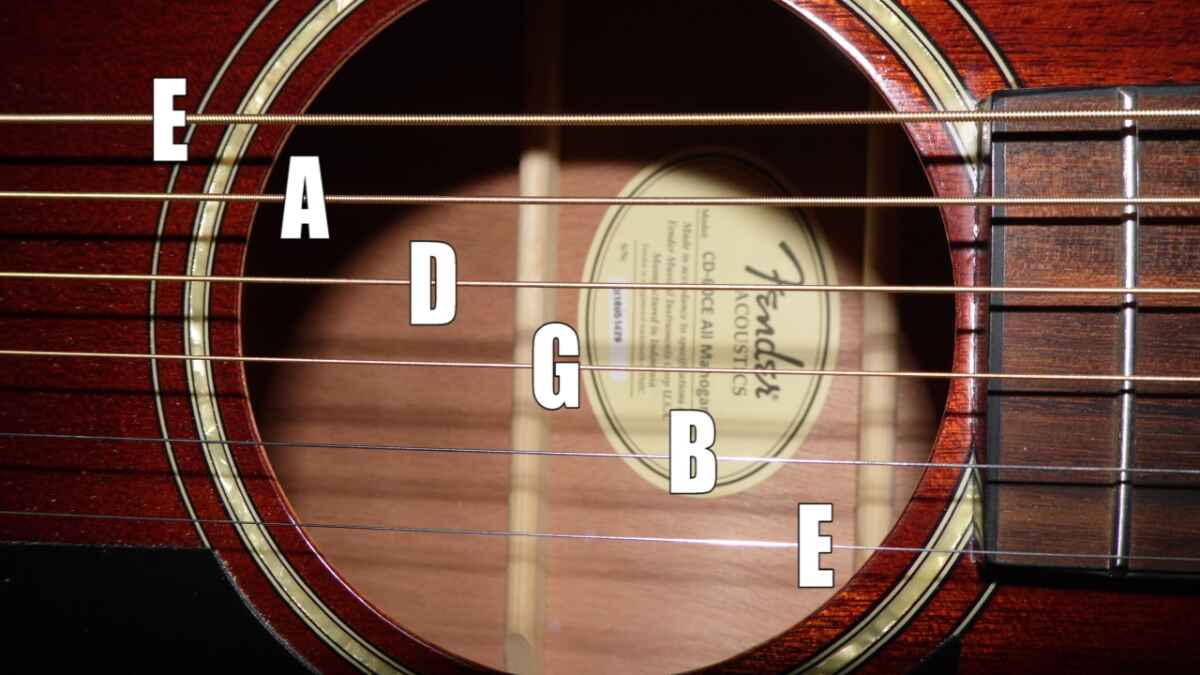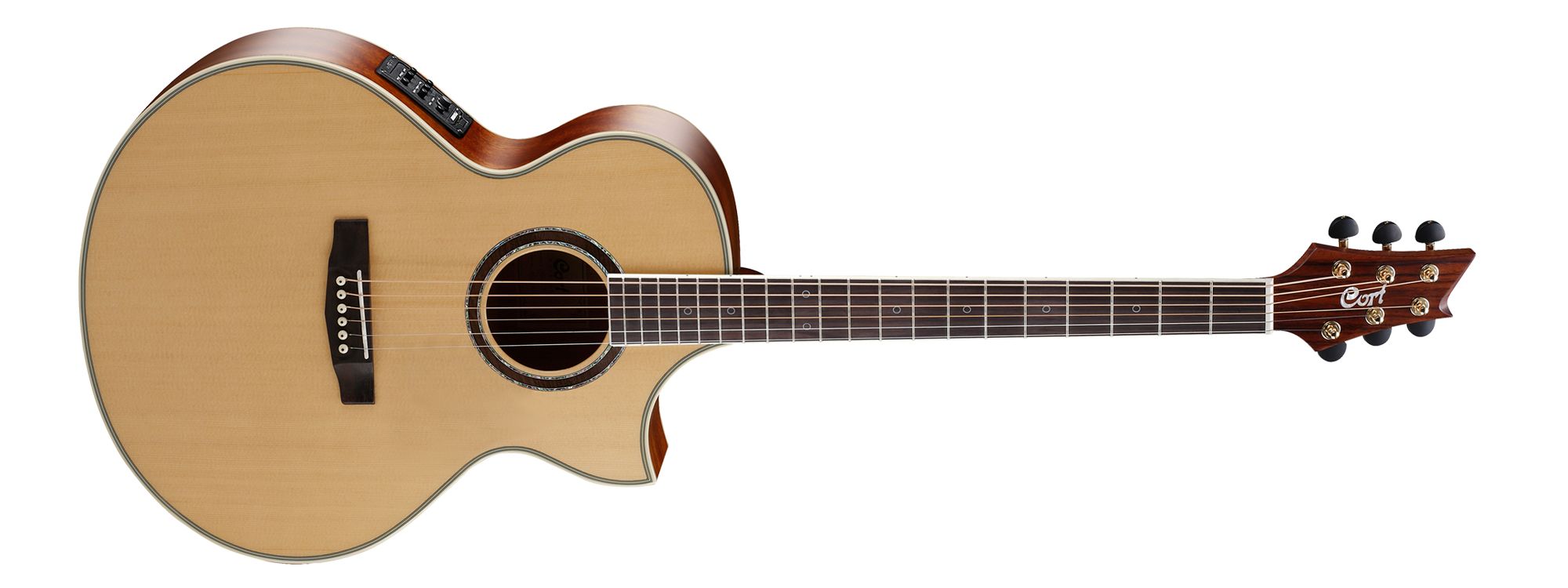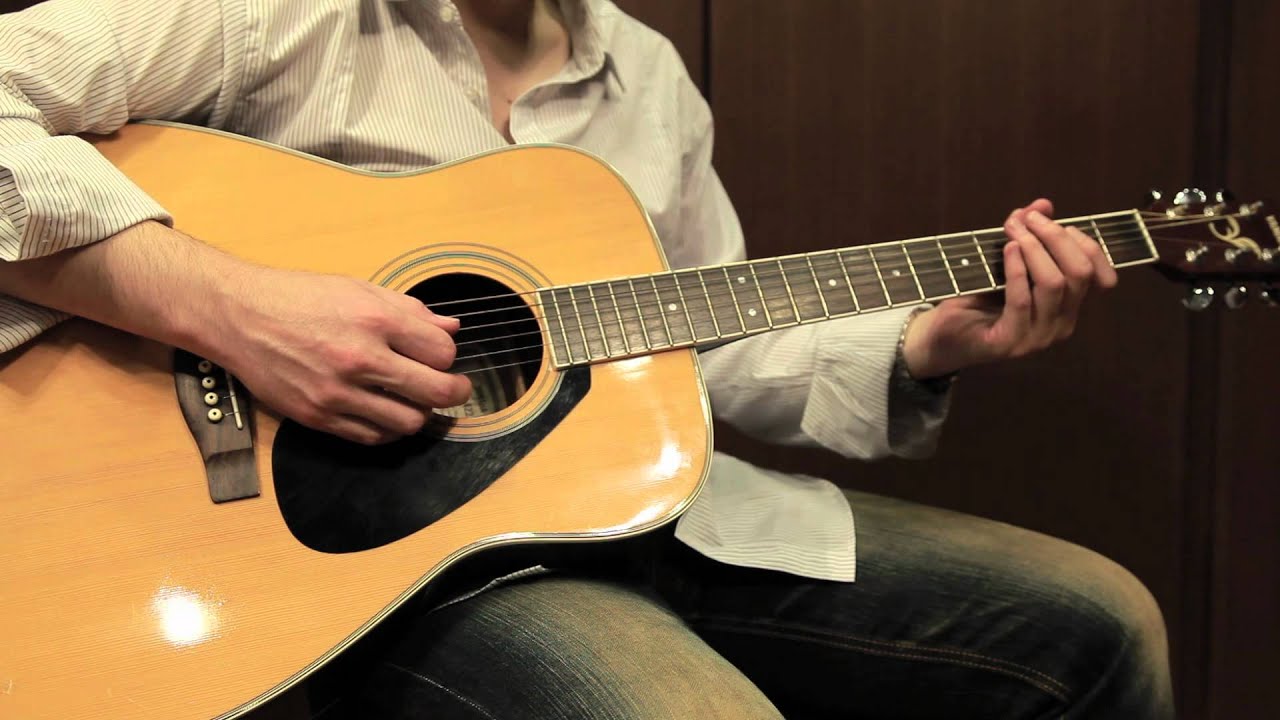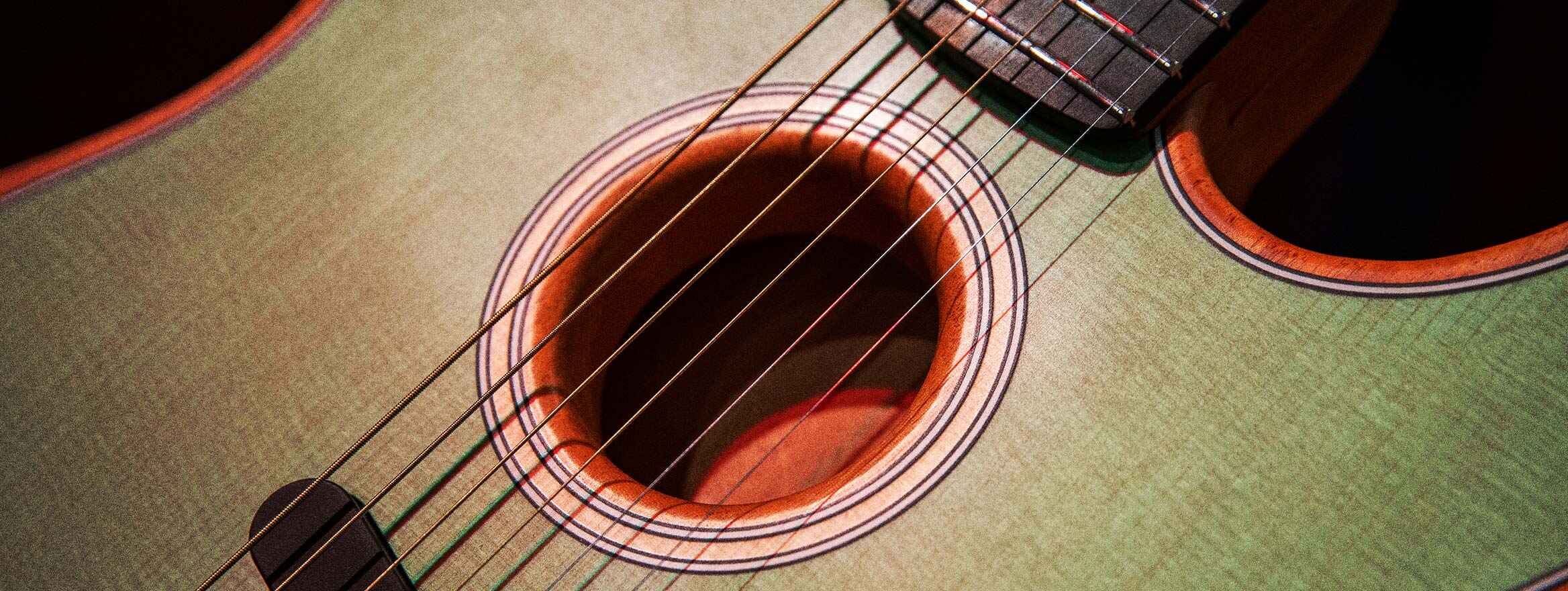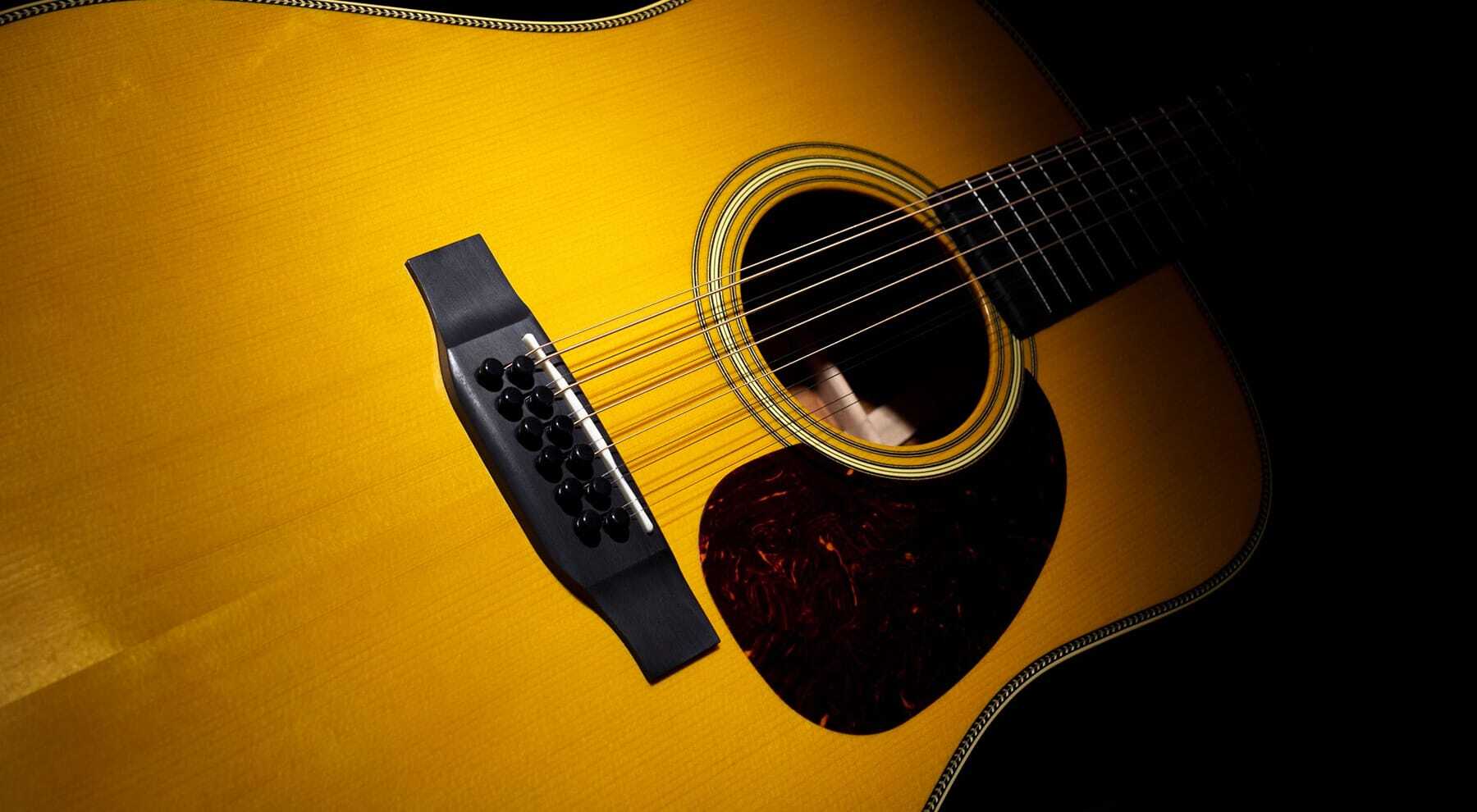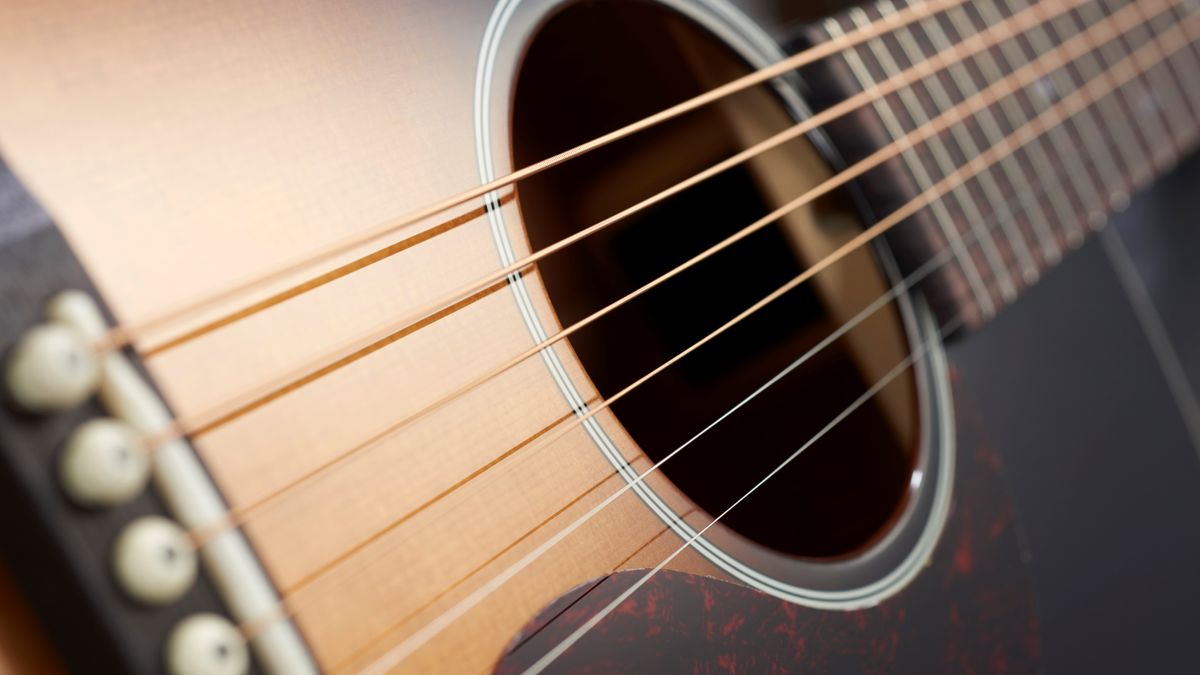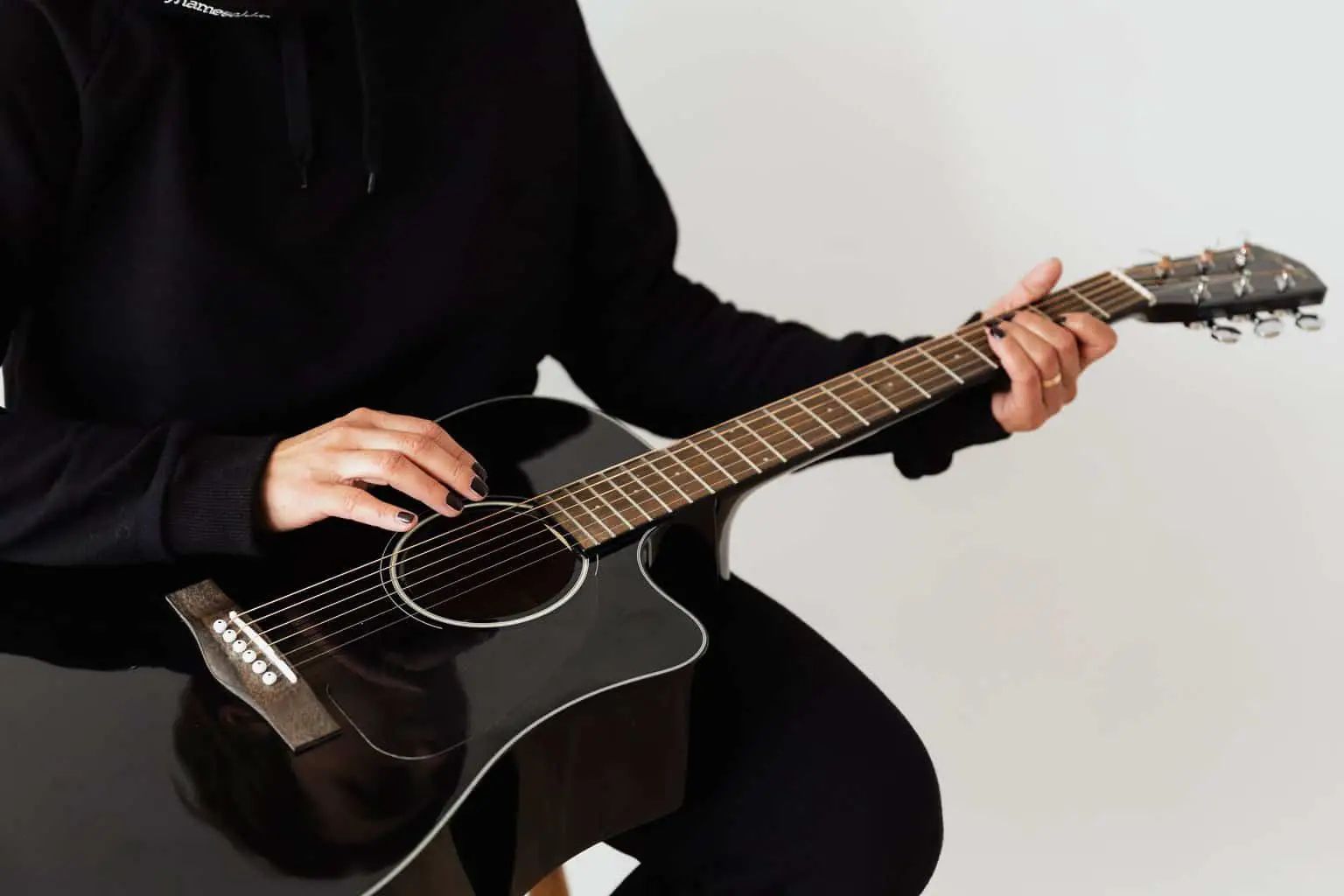Introduction
When it comes to playing the acoustic guitar, one of the most essential skills to master is tuning. Tuning your guitar correctly is the foundation for producing beautiful, harmonious sounds. Whether you are a beginner or an experienced guitarist, ensuring that your guitar is properly tuned is crucial for achieving the best possible sound quality.
In this article, we will explore the various methods and techniques to tune an acoustic guitar to standard tuning. Standard tuning is the most common tuning used for the acoustic guitar, where the strings are tuned to the pitches of E, A, D, G, B, and E from the lowest string to the highest string. By understanding the process of tuning and implementing the correct techniques, you can easily maintain the accuracy of your guitar’s tuning.
One of the easiest and most accurate ways to tune your guitar is by using a digital tuner. These tuners detect the frequencies of each string and provide visual feedback on whether the pitch is too high, too low, or in tune. Another method is tuning by ear, using reference notes or harmonics to match the pitch of each string. This method requires a good musical ear and can be challenging for beginners, but with practice, it becomes an intuitive skill.
For those who have access to a piano or keyboard, this instrument can also be used as a reference for tuning your acoustic guitar. The piano provides precise pitches that can be matched to each string, ensuring accurate tuning. Additionally, we will share some tips on maintaining tuning stability, as guitar strings tend to go out of tune over time.
Now that we understand the importance of tuning and the methods available, let’s dive into the steps of tuning an acoustic guitar to standard tuning. Whether you are a beginner eager to learn or an experienced player looking for a refresher, these tuning techniques will help you produce beautiful, harmonious melodies while playing your acoustic guitar.
Why Tuning Your Guitar is Important
Tuning your guitar is more than just a necessary task; it is a fundamental aspect of playing the instrument. Here are some reasons why tuning your guitar is crucial:
1. Sound Quality: A properly tuned guitar produces the best possible sound quality. Each string resonates at a specific frequency, and when the strings are in tune, they create harmonious vibrations that result in clear and pleasing tones. On the other hand, an out-of-tune guitar can produce dissonant and unpleasant sounds.
2. Playability: In-tune strings offer optimal playability. When your guitar is properly tuned, it becomes easier to play chords, scales, and melodies. Tuning ensures that your fingers land on the correct frets without any discrepancy in pitch, making it easier to create smooth transitions between notes and chords.
3. Ear Training: Tuning your guitar by ear is an excellent way to develop your musical ear. By learning to recognize and match the correct pitch of each string, you train your ears to identify subtle differences in sound. This skill will not only help you tune your guitar accurately but also improve your overall musicality and ability to play by ear.
4. Jamming and Collaboration: When playing with other musicians, it is essential for all instruments to be in tune. If your guitar is out of tune, it can create discordant notes and disrupt the harmony of the music. Tuning your guitar ensures that you can seamlessly join jam sessions or collaborate with other musicians, creating a cohesive and enjoyable musical experience.
5. Training the Mind: Tuning a guitar requires focus and concentration. It teaches you patience, precision, and discipline. As you become more proficient at tuning, you develop a deeper connection with your instrument and a greater understanding of how the guitar works. This mindfulness and attention to detail can be applied to other aspects of your musical journey.
6. Confidence and Stage Performance: Knowing that your guitar is in tune boosts your confidence as a performer. Whether you are playing in front of an audience or recording in a studio, being in tune allows you to showcase your talent and deliver a polished performance. It eliminates any distractions or doubts about the sound quality, enabling you to focus solely on expressing yourself through the instrument.
Taking the time to tune your guitar before every practice session, performance, or recording is a small but significant step towards achieving musical excellence. It not only enhances the sound quality but also improves your playing ability, musical ear, and overall enjoyment of the instrument. So, make tuning your guitar a regular practice and unlock the full potential of your acoustic guitar!
Understanding Standard Tuning
Standard tuning is the most widely used tuning for acoustic guitars. It provides a balanced and versatile range of notes, allowing guitarists to play a wide variety of songs and styles. In standard tuning, the strings of an acoustic guitar are tuned to the pitches of E, A, D, G, B, and E from the lowest string to the highest string. Let’s break down the individual strings and their corresponding notes:
- Sixth String (Low E): This is the thickest string and is tuned to the pitch of E. It provides the low and deep bass notes for your guitar.
- Fifth String (A): The next string is tuned to the note A. It is slightly thinner than the sixth string and produces a higher pitch.
- Fourth String (D): Moving to the next string, we have the note D. Tuning the fourth string creates a mellower and warmer sound.
- Third String (G): Continuing our journey, we come to the third string, tuned to the note G. This string adds a lively and bright tone to your guitar playing.
- Second String (B): The second string is tuned to the note B. It brings a higher pitch and contributes to creating rich and melodic harmonies.
- First String (High E): The thinnest and highest-pitched string is tuned to the note E. It provides the treble range and adds sparkle to your guitar sound.
The standard tuning not only allows you to play a wide variety of chords and melodies but also provides a consistent reference point for learning scales, arpeggios, and music theory. It also facilitates collaboration with other musicians who might be using the same tuning. Overall, standard tuning is the foundation for acquiring the skills needed to explore different genres and styles on the acoustic guitar.
Understanding the standard tuning and memorizing the pitch of each string is essential for tuning your guitar accurately. Once you are familiar with the notes and have developed a musical ear, you will be able to easily identify if a string is out of tune and make the necessary adjustments to bring it back into alignment. Regular practice and repetition will help you internalize the standard tuning and improve your ability to tune your guitar quickly and accurately.
Now that you have a solid understanding of standard tuning and its importance, it’s time to explore the different methods of tuning your acoustic guitar. Whether you choose to use a digital tuner, tune by ear, or utilize a piano as a reference, the goal remains the same – achieving that perfect pitch and ensuring your guitar is in tune for optimal sound quality and musical enjoyment.
Method 1: Tuning with a Digital Tuner
One of the most straightforward and accurate ways to tune your acoustic guitar is by using a digital tuner. Digital tuners are portable devices that detect the pitch of each string and visually display whether the string is tuned correctly, too high, or too low. Here’s a step-by-step guide on how to tune your guitar with a digital tuner:
- Clip the digital tuner onto the headstock of your guitar. Make sure it is securely attached and in a position where it can pick up the vibrations of the strings.
- Turn on the digital tuner and select the mode for guitar tuning, if applicable.
- Pluck the sixth string (low E string) open. The tuner will detect the pitch and display whether it needs to be tuned up or down. Adjust the tuning peg until the tuner shows that the string is in tune.
- Repeat the process for the remaining strings, moving from the fifth string (A) to the first string (high E). Pluck each string open and adjust the tuning peg until the tuner indicates that the string is correctly tuned.
- Once all the strings are in tune according to the digital tuner, double-check the tuning by playing some chords and individual notes to ensure the guitar sounds harmonious and in tune.
Using a digital tuner takes the guesswork out of tuning and provides accurate feedback in real-time. It is an excellent tool for beginners and experienced guitarists alike. Digital tuners are widely available and come in different types, including clip-on tuners that attach to the headstock, pedal tuners for use with electric guitars, and mobile apps that can be downloaded onto smartphones or tablets.
Remember to tune your guitar regularly, as environmental factors, playing, and even the tension of the strings can cause them to go out of tune. By using a digital tuner, you can quickly and efficiently bring your guitar back into perfect pitch, ensuring you always sound your best and enjoy the full potential of your acoustic guitar.
Method 2: Tuning by Ear with Reference Notes
Tuning your acoustic guitar by ear is a valuable skill that can be developed with practice and a keen musical ear. This method allows you to tune your guitar without relying on any external tools. Instead, you use reference notes as a guide to match the pitch of each string. Here’s a step-by-step guide on how to tune your guitar by ear:
- Start by getting a reference note for the sixth string, the low E string. You can use a piano, a guitar tuner app, or any other instrument that can produce the note E.
- Pluck the sixth string open and listen to its pitch.
- Compare the pitch of the open sixth string with the reference note. If the sixth string is too high, loosen the tuning peg to lower the pitch. If it is too low, tighten the tuning peg to raise the pitch.
- Continue this process for the remaining strings, using the appropriate reference notes for each string. Here are the reference notes for standard tuning: A (fifth string), D (fourth string), G (third string), B (second string), and high E (first string).
- As you tune each string, listen carefully to the pitch and make slight adjustments to the tuning peg until the string matches the reference note.
- Once all the strings are tuned according to your musical ear, test the tuning by playing chords and individual notes to ensure the guitar sounds harmonious and in tune.
Tuning by ear may be challenging at first, especially for beginners who are not yet accustomed to identifying different pitches. However, with practice, you will gradually develop a sense of pitch and accuracy. It’s important to listen carefully and make small adjustments to the tuning pegs to achieve the desired tuning.
This method also allows for personalization, as you can adjust the tuning based on your preference and playing style. Some guitarists prefer a slightly higher or lower pitch for certain strings to suit their musical tastes. Tuning by ear gives you the flexibility to make these adjustments as you see fit.
Although it may take time to become proficient at tuning by ear, it is a valuable skill to have as a guitarist. Once mastered, tuning by ear allows you to tune your guitar anytime, anywhere, without relying on external tools. It also enhances your musical ear and provides a deeper connection to your instrument.
So, take the time to practice tuning by ear and soon you’ll be able to confidently tune your acoustic guitar without the need for assistance from digital tuners or reference devices.
Method 3: Using a Piano or Keyboard to Tune
If you have access to a piano or keyboard, it can serve as a reliable reference for tuning your acoustic guitar. The piano provides precise pitches that can be matched to each string, ensuring accurate tuning. This method is especially useful if you don’t have a digital tuner or prefer a more traditional tuning approach. Here’s how you can tune your guitar using a piano or keyboard:
- Position your guitar next to the piano or keyboard, ensuring that you can easily access the tuning pegs while viewing the piano keys.
- Identify the reference note for the sixth string, the low E string. On the piano, this is the key that is two white keys to the left of middle C.
- Pluck the sixth string open on your guitar and play the reference note on the piano simultaneously. Listen to the pitches and adjust the tuning peg until the sixth string matches the piano note.
- Continue this process for the remaining strings, using the appropriate piano keys as reference notes. Here are the keys for standard tuning: A (fifth string), D (fourth string), G (third string), B (second string), and high E (first string).
- As you tune each string, pluck it and play the corresponding piano key. Make slight adjustments to the tuning peg until the guitar string matches the piano note.
- Once all the strings are in tune according to the piano, test the tuning by playing chords and individual notes to ensure the guitar sounds harmonious and in tune.
Using a piano or keyboard as a reference for tuning allows for precise and accurate tuning because the piano keys produce fixed pitches. It is recommended to use a well-tuned piano for the best results. If you don’t have access to a piano, there are also online piano apps and virtual keyboards available that can serve as a reference.
This method is particularly helpful if you are looking to tune your guitar in relation to a specific musical key or want to experiment with alternate tunings. The piano provides a solid foundation to ensure your guitar is in tune with other instruments or musical compositions.
Tuning your guitar with a piano or keyboard may take some time and practice to develop a good ear for pitch. However, once you become familiar with the relationship between the guitar strings and the piano keys, you’ll be able to tune your acoustic guitar accurately without the need for a digital tuner or other external tools.
So, whether you have a piano at home or have access to a keyboard instrument, give this method a try and experience the satisfaction of achieving precise tuning on your acoustic guitar.
Tips for Maintaining Tuning Stability
While tuning your acoustic guitar is essential, it’s equally important to maintain tuning stability to ensure your guitar stays in tune for longer periods. Here are some tips to help you maintain the tuning stability of your acoustic guitar:
- 1. Proper String Installation: When changing strings, make sure to wind them properly around the tuning pegs. Avoid overlapping or leaving excessive slack, as this can cause strings to slip out of tune more easily.
- 2. Stretching the Strings: New strings tend to stretch and settle after the initial installation. Gently pull and stretch each string along its length to help them settle and stabilize. Retune the guitar and repeat the stretching process until the strings hold their tune more consistently.
- 3. Quality Tuning Pegs: Invest in good quality tuning pegs that provide smooth and reliable tuning adjustments. Sturdy tuning pegs hold the strings securely and prevent them from slipping out of tune during playing or when using tremolo techniques.
- 4. Nut Lubrication: Apply lubricant (such as graphite or specialized nut lubricants) to the slots of the guitar nut. This reduces friction on the strings, allowing them to slide more freely and return to pitch better after bending or using the whammy bar.
- 5. Temperature and Humidity Control: Extreme changes in temperature and humidity can cause the wood of your guitar to expand or contract, affecting the tension of the strings. Store your guitar in a controlled environment and use a humidifier or dehumidifier if necessary to maintain stable conditions.
- 6. Regular Maintenance: Keep your guitar well-maintained by cleaning the fretboard, changing strings regularly, and checking for any loose components. A well-maintained guitar is more likely to stay in tune and perform optimally.
- 7. Stable Bridge Setup: Ensure that the bridge of your acoustic guitar is properly set up and stable. A properly adjusted bridge and saddle help maintain string tension and improve tuning stability.
It’s important to note that even with the best maintenance practices, guitars will naturally go out of tune over time due to factors such as string fatigue and playing style. Regular tuning checks and adjustments are necessary to maintain the desired pitch and sound quality.
By following these tips and incorporating them into your guitar care routine, you can significantly improve the tuning stability of your acoustic guitar. Tuning stability not only enhances your playing experience but also allows you to focus on your music without constant interruptions to retune your instrument.
Remember that practice and experience play a vital role in maintaining tuning stability. As you become more familiar with your guitar’s unique characteristics, you’ll develop a better understanding of how to keep it in tune and optimize its performance.
Final Thoughts
Tuning your acoustic guitar to standard tuning is a fundamental skill that every guitarist should master. It not only ensures that your instrument produces the best possible sound quality but also enhances your playing experience. Whether you choose to use a digital tuner, tune by ear with reference notes, or rely on a piano or keyboard, the goal is to achieve accurate and harmonious tuning.
By regularly practicing tuning techniques and developing your musical ear, you’ll become more proficient at keeping your guitar in tune. Remember to maintain proper string installation, stretch new strings, invest in quality tuning pegs, lubricate the nut, and control the temperature and humidity where you store your guitar. Regular maintenance and attention to these details will contribute to better tuning stability.
Always strive for precision when tuning your acoustic guitar, as it plays a significant role in the overall sound and playability of the instrument. Additionally, consistent tuning is essential for playing with other musicians, both in informal jam sessions and professional settings.
So keep your guitar in tune and enjoy the journey of creating beautiful music. Whether you’re a beginner or a seasoned player, understanding and implementing proper tuning techniques will enhance your skills and allow you to fully express yourself through the magical sounds of the acoustic guitar.







